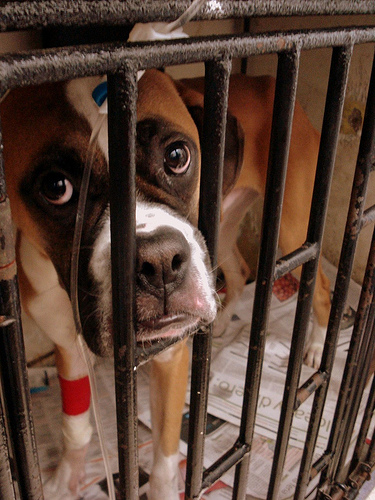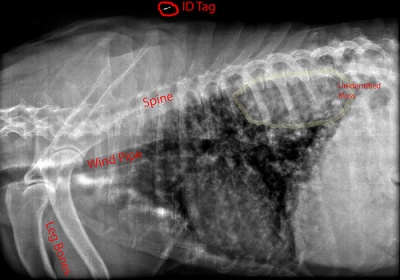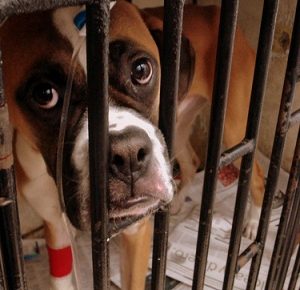
Mast Cell Tumors (MCTs) are sometimes misdiagnosed as lipomas (fatty tumors).
MCTs are cancerous cells that release histamin and heparin (a blood thinner) which can result in localized swelling, inflammation and allergies.
The most common location for MCTs is the skin, but can also be seen in the liver, spleen, gastrointestinal tract and bloodstream.
An MCT looks like a round, pink lump in the skin, but can also vary in size and shape. These tumors in cats are usually benign (non-cancerous), but are malignant in dogs.
MCTs are graded on 3 levels. A fine needle aspirate is taken, usually painless, where a small amount of tissue is removed and microscopically evaluated. Xrays are performed to check if there is evidence of the disease elsewhere in the body. A blood cell count and urinalysis are also taken.
Grade I – least aggressive, less likely to metastasize
Grade II – moderately malignant with low recurrence rate
Grade III – highly malignant, very aggressive
Your pet’s symptoms can be lack of appetite, vomiting, abdominal pain, black tarry stools which indicate bleeding in the intestinal tract.
Sometimes a biopsy will be performed on a suspicious lump.
With surgical removal of MCTs, the surgeon will take extra margins, that is more surounding tissue to hopefully remove any remaining cancer cells. Examination of tissue will be performed by a pathologist who will determine if margins are “clean” (no remaining cancer cells) or “dirty” (presence of MCTs).
Surgery is the first line of defense and the gold standard for treating MCTs.
An antihistamine is often prescribed to offset the effects of the histamin released by the tumor.
Radiation therapy can be performed on pets whose tumors are inoperable. Dogs tolerate radiation well.
Chemotherapy with anti-cancer drugs is also used sometimes.
Although there are side effects from prolonged use of Prednisone, it is the most commonly used drug for MCTs.
The Vinblastine Protocol is another method of treatment. It uses Prednisone, Vinblastine and Cytoxan as prescribed by your veterninarian. Side effects can be lowering of the body’s defenses causing frequent infection.
Lomustine (CeeNu) is a potent oral chemotherapy drug used when there is resistance to other drugs. Side effects can be infection, fever, depression, weakness, inappetance.
Palladia (Toceranib) is the newest and the first drug specifically for cancer treatment in dogs. It works by cutting off blood supply to the tumors and killing the tumors Side effects can be diarrhea, dark tarry stools, depressed appetite, vomiting, abnormal bruising or bleeding, fresh blood in vomit or stools.
If your pet is taking any of these medications and any of the side effects are present, it is vital that you contact your vet or oncologist immediately.
The Mitotic Index is an addition to grading mast cell tumors. The mitotic index measures the rate of division of mct cells. The higher the mitotic index, the poorer the prognosis. Regardless of the grade of mct, median survival rate depends largely on mitotic index scores.
If you notice any lumps or bumps on your pet, they should be examined by a veterinarian ASAP.


